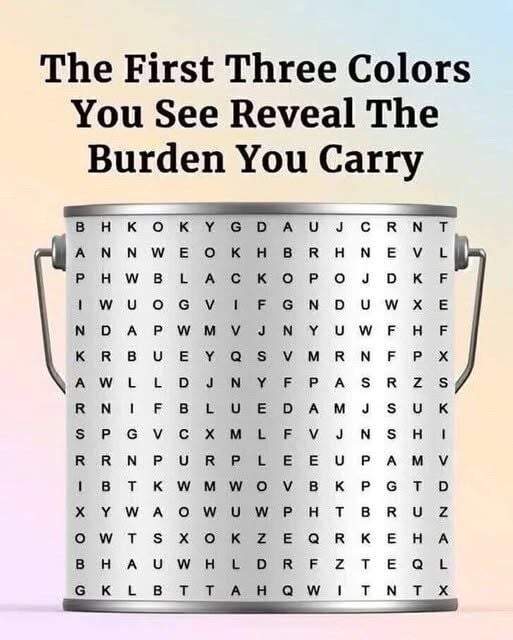Before we ever speak a word, color begins to tell our story. The shades we wear, the tones we decorate with, and even the ones we avoid—all of them reflect something about how we feel and what we need. Color isn’t just a matter of taste or style; it’s emotional language. It mirrors the moods, memories, and meanings that shape our inner world.
For older readers who have lived through many seasons of life, it’s fascinating to realize that the colors we surround ourselves with often shift right alongside us. A deep red scarf, a calm blue wall, a pale yellow mug—these small choices quietly record where we are in our emotional journey.
When Color Speaks Before Words
Many of us think of color as decorative, but in truth, it’s deeply expressive. A favorite hue often acts like a mood diary, reflecting how we feel long before we realize it consciously. Every shade has a story. The colors we embrace—and those we shy away from—can tell us more about our emotional state than we might expect.
❤️ Red – The Pulse of Energy and Emotion
Red is pure vitality. It’s the color of blood, warmth, love, and movement. People who find themselves drawn to red often crave energy or confidence. They may be ready for action, seeking to be seen, or longing to feel alive again.
But red can also point to restlessness or frustration. During stressful times, some people unconsciously wear or use more red—as though trying to call their energy back to the surface. On the other hand, avoiding red may suggest discomfort with confrontation or visibility. Red demands attention, and steering away from it can signal a wish to stay safely unseen.
💙 Blue – Calm Waters and Quiet Strength
Blue is serenity made visible. The color of clear skies and still lakes, it encourages peace and emotional balance. When you find comfort in blue, you may be longing for stability, reflection, or gentle space to think.
That’s why doctors’ offices, spas, and meditation spaces often use blue—it lowers the pulse and calms the mind. Yet too much blue can sometimes suggest emotional distance. It’s the color of both connection and solitude: peaceful but also protective.
💚 Green – Growth, Healing, and Grounding
Green is nature’s own medicine. It bridges blue’s calm with yellow’s optimism, creating a color that restores balance. When we reach for green—whether in plants, fabrics, or clothing—it often means we’re seeking renewal or a fresh start.
In healing environments, soft green tones promote recovery and trust. Avoiding green, however, can suggest resistance to change or fear of emotional vulnerability. Green invites openness. Declining it can mean we’re not yet ready to grow.
💛 Yellow – Light, Hope, and Curiosity
Yellow is the sunshine of the spectrum. It’s cheerful, creative, and full of movement. When you’re drawn to yellow, you may be craving lightness after heaviness—a reminder to stay curious and hopeful.
Yet yellow also exposes. Because it’s such a visible hue, people who avoid it may feel uneasy about attention or judgment. A small dose of yellow—a vase, a scarf, a notebook—can reawaken optimism after loss or fatigue.
💜 Purple – Depth, Wisdom, and Change
Purple blends red’s passion with blue’s calm. It’s often chosen during times of transformation, when we’re reflecting deeply or searching for meaning. Historically, purple has symbolized wisdom and spirituality.
If you’re drawn to purple, it may signal readiness to evolve—to move beyond what’s known into something more profound. Those who avoid it may simply prefer clarity over complexity; purple can be mysterious and introspective, qualities that not everyone feels comfortable exploring.
⚫⚪⚫ Black, White, and Gray – The Silent Shades
Not all emotions are loud. The neutral tones—black, white, and gray—carry their own quiet power.
- Black represents protection and control. People who choose it often seek emotional boundaries or a sense of strength. It’s not always somber; sometimes, it’s simply armor.
- White stands for simplicity and renewal. It’s the color we choose when we want to clear mental clutter or start fresh. Yet in many cultures, white also marks transition or mourning—symbolizing movement from one chapter to the next.
- Gray is the pause between extremes. It appears in moments of exhaustion or indecision, offering neutrality and rest. But too much gray for too long may reflect emotional weariness or disconnection.
The Science Behind Color and Mood
Our reactions to color run deeper than preference—they’re physiological. Studies show that red can raise heart rate and energy levels, while blue slows breathing and lowers blood pressure. Yellow tends to stimulate mental activity, and green supports calm focus.
Culture also shapes color’s meaning. In Western contexts, white signals purity and new beginnings; in parts of Asia, it represents loss and transition. Red may mean love, danger, or celebration depending on where you are.
Regardless of culture, one truth remains: color bypasses logic. It reaches emotion first, then thought. That’s why a single color can shift your mood before you even notice.
Everyday Color, Everyday Emotion
Think about the mug you reach for in the morning, the sweater you love most, the shade of paint on your walls. None of these choices are accidental. Each one reflects a small piece of your emotional world.
After difficult seasons, people often gravitate toward muted or darker tones—colors that ground and protect. When life begins to brighten, warmer and lighter hues tend to return. Even the colors we reject have meaning. Avoiding bold reds or yellows can hint at a need for calm, while craving them may show readiness for renewal.
Listening to the Colors Around You
The next time you find yourself drawn to a color—or avoiding one entirely—pause and ask: What might this be saying about how I feel right now?
Color isn’t just about matching décor or fashion trends. It’s a form of quiet communication, expressing what we can’t always put into words. The walls we paint, the scarves we choose, even the flowers we bring into our homes all whisper parts of our story.
So listen closely. Because sometimes, long before we speak, color already knows what our hearts are trying to say.



